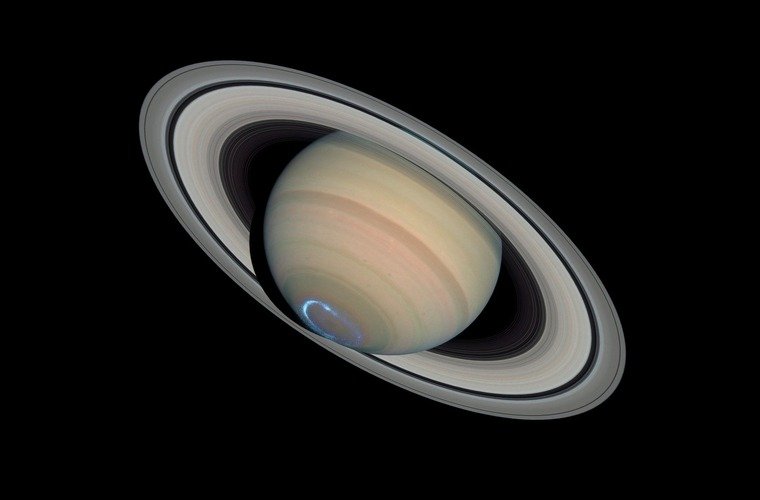Of all the planets visible to stargazers on Earth, Saturn, the sixth planet from the sun in our solar system, is by far the most unique in appearance. On clear nights, a skywatcher armed with a decent telescope (or even a good pair of binoculars) will be treated to a view of Saturn’s majestic rings. Although it isn’t the only planet possessing such structures, Saturn’s rings are the most clearly visible of any planet visible from Earth, and their origins remain mysterious to astronomers.
“It has these prominent set of rings where we’re not quite sure where they came from,” explained Burkhard Militzer, a professor of Astronomy at the University of California Berkeley, in an interview with the Debrief. “[Saturn] also spins on the side about 27 degrees.”
To try to understand what makes Saturn so unique, Militzer recently collaborated with researchers at MIT and other universities to try and resolve these questions once and for all. Now, they believe they could have an answer: that the planet’s characteristic rings and tilt were caused by an ancient, and now missing moon.
Background: Pulling a Planet
The research, now published in Science, began by looking at the interactions between Saturn and Neptune. During the early 2000s, scientists postulated that Neptune’s gravity was affecting Saturn’s tilt, causing it to rotate at an angle. However, with new data from the Cassini spacecraft, Militter and the other researchers wondered if there was another explanation.
While Saturn currently has 83 moons, a missing moon could’ve played a key part in the planet’s history. According to Militzer, adding another moon to their calculations would “be perfectly fine. But with this additional moon, then Neptune has another handle, it can tilt that little bit more easily…” As for where this mysterious moon, which the scientists had named Chrysalis, currently was…was in Saturn’s rings.
Analysis: How to Make Saturn’s Rings
The process of making a moon disappear is no small feat. Looking at the data, researcher Jack Wisdom, professor of planetary sciences at MIT, suggested one possible explanation. Between 100 to 200 million years ago, Chrysalis entered an unstable orbital zone which brought it dangerously close to the moons Iapetus and Titan. Chrysalis then eventually came too close to Saturn, grazing the planet and being ripped to pieces, creating the planet’s rings.
“There’s this interesting process called tidal disruption,” explained Militzer. “If you have an object that is a bit extended like a moon, it feels stronger gravity on the close side than on the opposing side. So, there is pull to one side and pull to the other side and as a result, that moon gets pulled apart.”
While tidal disruption is rather rare (except at black holes), the process has been witnessed before in the Shoemaker-Levy 9 comet. In July of 1992, this comet made a close approach to Jupiter before being ripped apart due to the planet’s gravity. With Saturn, the tidal disruption process explains the planet’s unique features.
“We have a theory that explains why Saturn actually spins on its side,” added Militzer, “and we have a story about where the rings are coming from for the first time. We have something that’s actually supported by data.”
Outlook: Naming A Missing Moon
While the scientists relished the excitement of uncovering more about Saturn’s history, they also enjoyed naming its missing moon. After throwing around a bunch of proposed names, Militzer suggested Mystique. “There were not enough X-Men fans on the team,” he said, “So, that fell short.”
Wisdom offered up his own name suggestion of Chrysalis. “Just like a butterfly’s chrysalis, this satellite was long dormant and suddenly became active, and the rings emerged,” he explains. Though the scientists faced some initial confusion about naming regulations since their moon no longer existed, Chrysalis was nonetheless able to stay.
Apparently, “There are no rules for naming objects that existed in the past,” Militzer says.
Kenna Hughes-Castleberry is a staff writer at the Debrief and the Science Communicator at JILA (a partnership between the University of Colorado Boulder and NIST). Her writing beats include deep tech, the metaverse, and quantum technology. You can find more of her work at her website: https://kennacastleberry.com/

